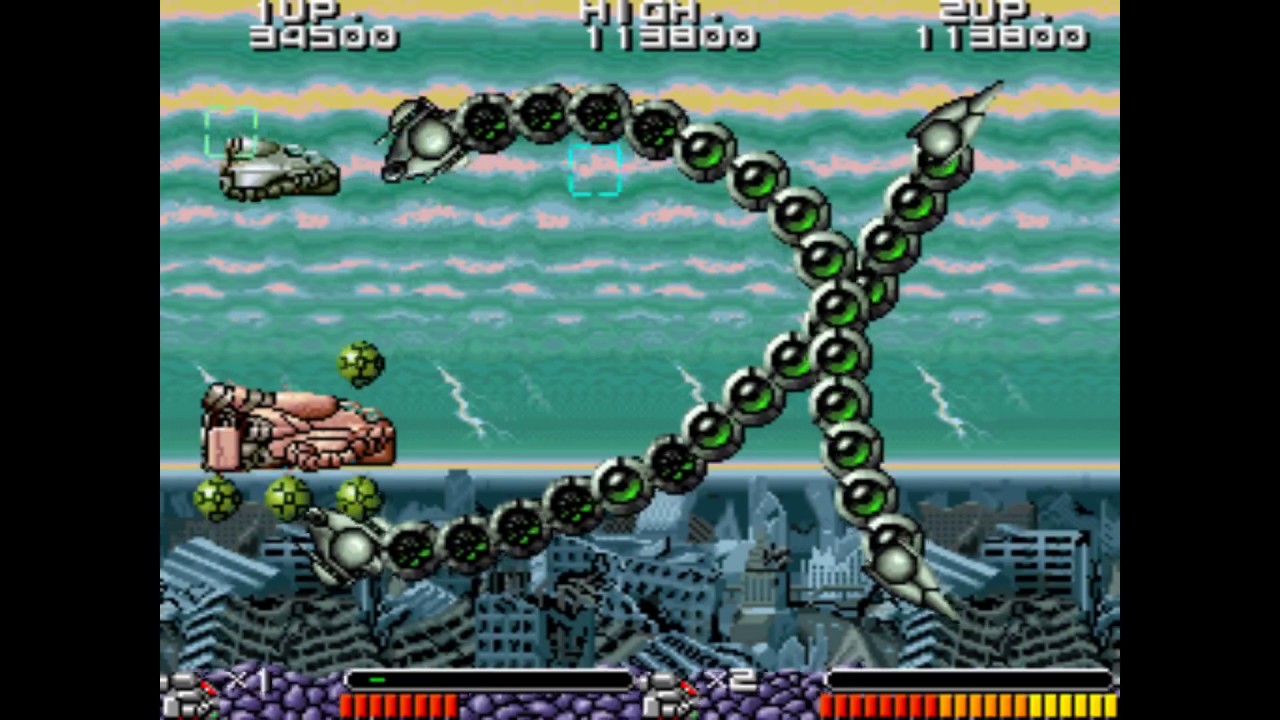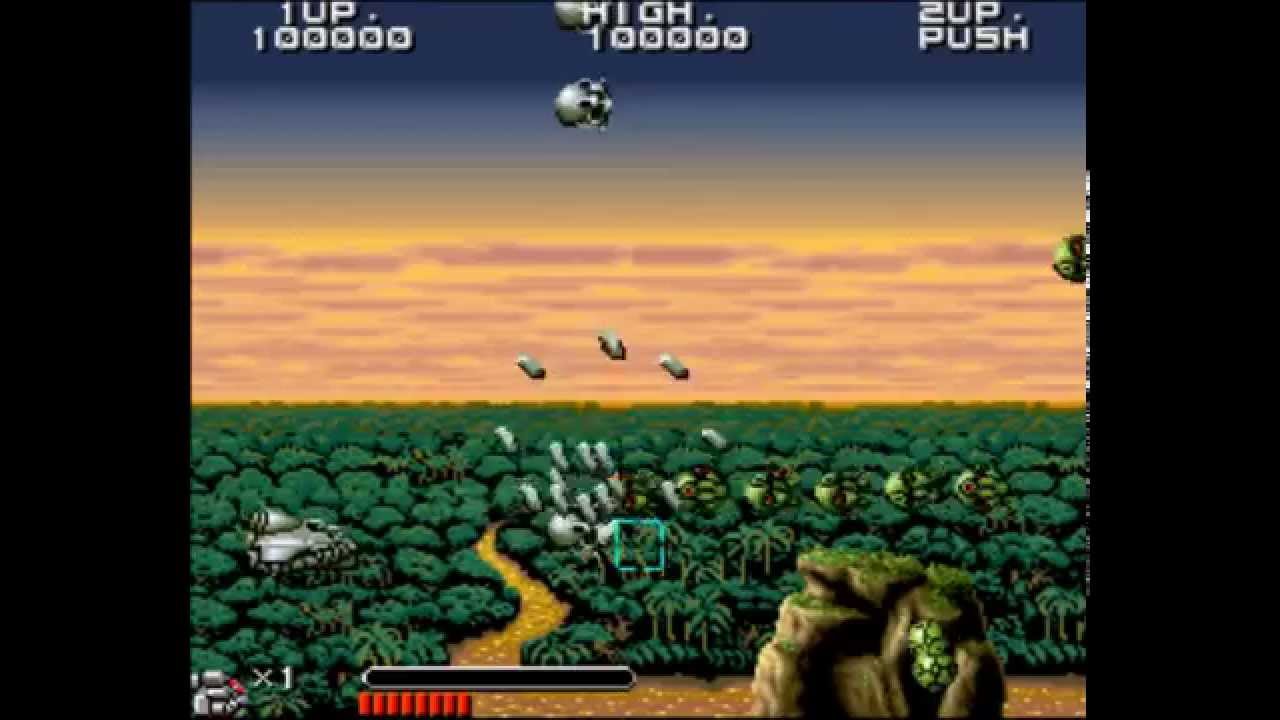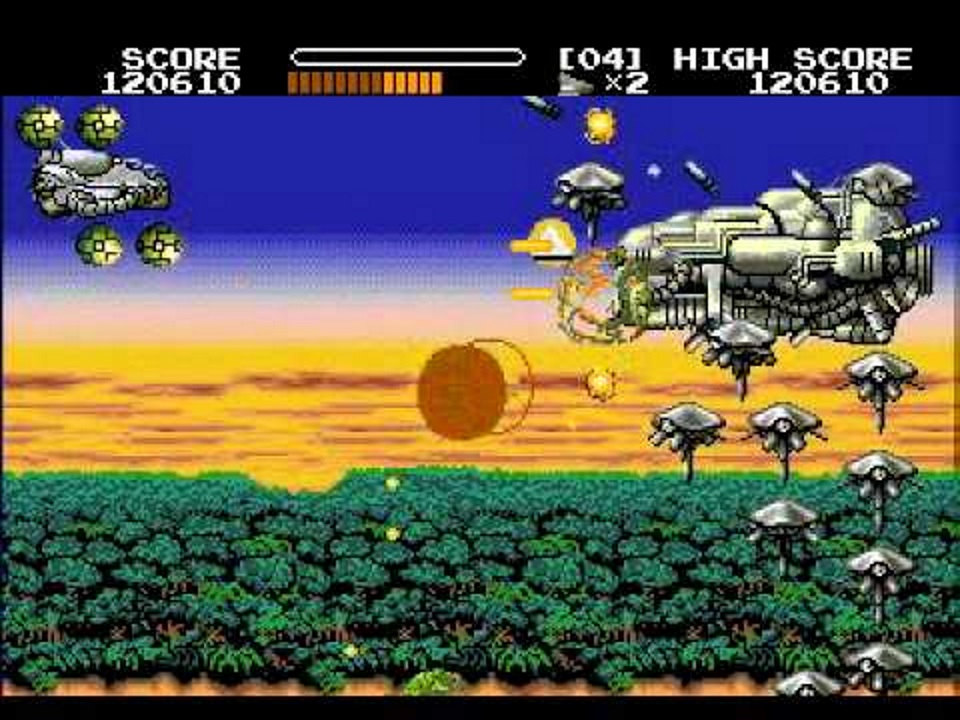Bio-Ship Paladin: The Underrated Shoot-em-up of 1990
It’s obscure and probably not for everyone, but 1990’s Bio-Ship Paladin has a bold design that modern games could easily learn from...
The far-reaching tendrils of the internet mean that nothing’s truly forgotten these days: from half-forgotten sitcoms canceled after an episode or two to early silent films, you’re sure to find information on just about anything if you can fire the right search term at Google. So while Bio-Ship Paladin, a side-scrolling shooting game released in 1990, isn’t completely unknown – it even has its own Wikipedia entry – it’s certainly obscure compared to a lot of other games from the period.
Part of the problem is that Bio-Ship Paladin – also known in Japan as Space Battleship Gomora – was released at a time when the shoot-em-up genre was already at saturation point. In both arcades and on the Sega Genesis, the only home platform it was ported to, there were dozens of other games that involved flying through exotic environments and blowing stuff up. Within a year, the whole gaming community would be turned upside down by the phenomenon that was Street Fighter II: The World Warrior. By the time Bio-Ship Paladin arrived on the Sega Genesis in 1991, it probably already looked like a relic.
Besides, Bio-Ship Paladin doesn’t exactly do much to endear itself to newcomers. Sure, its graphics and sound are pretty cool, particularly in arcades, but it moves along at a snail’s pace, while the player’s ship is huge and horribly vulnerable to attack. It’s worth remembering that, 28 years ago, most games of this kind were supposed to be easy to grasp within a few seconds’ play – the shooting genre, in particular, was where you were supposed to find quick, gratifying fixes.
Bio-Ship Paladin, by contrast, has a strange control system that isn’t quite like any other game that came before or since, and a combat style that only makes sense after a bit of thought and experimentation. It’s little surprise, then, that neither of the game’s versions exactly caught fire. The arcade machine came and went, while the Sega Genesis version (which we’re largely discussing here) was only released in Japan. The company behind it, UPL Corporation, went belly-up about a year later.
First, the obvious stuff: the plot involves some kind of alien invasion on a far-off planet, and you control a spacecraft charged with shooting down all of the aggressors. In the tradition of Gradius and the Thunder Force series, you fly from left to right, avoiding enemy fire and shooting back. Holding down the fire button will unleash a charge shot, as seen in R-Type. The big twist, however, is that pressing a second button will switch between control of your ship and an aiming reticle, which you can then freely move around the screen and use to fire more precise shots at invaders.

At the time, some critics dismissed this odd mechanic as little more than a gimmick. Even more recently, in YouTube videos and internet posts, it seems that a number of people who’ve attempted to play Bio-Ship Paladin have quickly walked away in disgust. The game opens with a barrage of enemies, your ship’s too slow, and anyway, what’s the point of using the Missile Command–style shooting mechanic when you can just blast at things like you can in any other side-scroller? After all, your ship’s vulnerable as soon as you switch over to the moving-cursor mode.
But far from a gimmick, grasping the vagaries of the control system is vital to understanding how Bio-Ship Paladin really works. The game’s actually much harder if you try to play it like Gradius or Thunder Force. For the most part, it seems that its creators prefer you to leave the ship to fly along by itself as you waste everything with pin-point blasts from the aiming reticle. If you’re fast enough, those barrages of enemies can be dealt with far more quickly this way, rather than with blasts from the ship’s standard cannons. All but the biggest and most powerful bullets from bosses can also be destroyed by your reticle fire.
Once this is understood, what at first looks like a slow and impenetrable game suddenly springs to life. The reason your ship’s so slow is because it’s essentially an object that you’re escorting through the game and protecting from incoming attacks – it’s one of the cities from Missile Command, except more mobile and deadly. The game’s measured scrolling means that, once you get to grips with everything, it becomes second nature to move the ship into a safe part of the screen, then switch back to the aiming mode and blow stuff up. The ship’s main guns are then relegated to use in tight corners, like level two’s more claustrophobic network of pipes and dangerous outcroppings. Even here, it makes sense to keep switching back and forth between modes, because the aiming reticle can shoot at things that are out of the ship’s line of sight, meaning you can clear a safe path and then flick back to moving the ship through the swathe you’ve created.

The power-up system also seems a little counter-intuitive until you realize what the designers are up to behind the scenes. Collecting spheres with an L on them will increase your ship’s energy bar, meaning you can take more hits before dying, but it will also make your ship increase in size. In short, it’s a simple risk-reward dilemma: is it better to have a large ship that is more armored but is also a larger target, or a smaller ship that can only be struck three or four times? There are other additions, too, including speed-up icons and little spheres that both shoot out bolts of energy at 45-degree angles and serve as temporary shields.
None of this is to say that Bio-Ship Paladin is some lost classic. Its graphics are quite decent in a sci-fi ’90s way, but they aren’t as stunning as, say, the Thunder Force series, which likely had a bigger budget to work with. The main ship is a boxy looking thing that has all the grace and charisma of an abandoned fridge. Nor is its music as relentlessly catchy as the accompaniments that graced its flashier competitors from companies like Konami and Toaplan.
What the game does have going for it, though, is a clear desire to try something different. At a point when most arcade-action games were content to change only small nuances within a standard template, Bio-Ship Paladin attempted to mix things up. Its shooting requires a modicum of strategy and consideration. Even its boss battles are as much about careful positioning and picking out unmarked targets on huge tank-like craft bristling with guns. Certainly, completing the game requires more than just fast reflexes and memorization, though they’re also an important part of the mix: understanding exactly when to deploy the reticle and when to move your ship around are the key.

Looking back at Bio-Ship Paladin today, we can’t help wonder why other developers haven’t taken inspiration from it. Back then, one of the things going against the game was the sheer weight of competition and the hectic pace of arcades. Today, it’s easier to imagine players sitting down and really trying to get to grips with how Bio-Ship Paladin works, rather than just move on to the next louder, flashier blaster. There’s certainly room here for refinement, both visually and in the nuances of the controls – it really isn’t necessary for the player’s ship to be quite that slow to move around, for example.
Even if nobody does think of a way of updating Bio-Ship Paladin for a modern audience, there’s still plenty to learn from its innovative spirit. How, for example, could the first-person shooter genre be shaken up with a bold reworking of its mechanics? This old game from 1990 shows how a fairly staid type of game can be turned on its head with the addition of a couple of strange ideas. Admittedly, not many people fell in love with Bio-Ship Paladin, by the looks of things, but that’s at least in part because of the game’s timing and presentation – released by a bigger company, and a bit earlier, it may have been more of a cult hit.
Today, Bio-Ship Paladin’s little more than a curio, admired largely in collector’s circles due to its scarcity. Trying to find a copy for the Sega GenesisMega Drive these days is neither cheap nor easy. But Bio-Ship Paladin deserves to be remembered as something more than a pricey relic. Beneath its gray, stern facade lies a challenging, surprisingly absorbing shooter that dares to tinker with the basic assumptions of its genre.